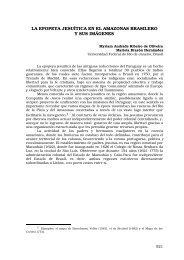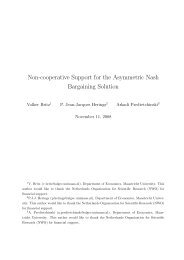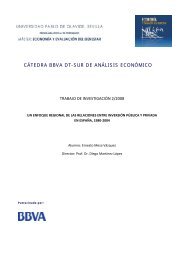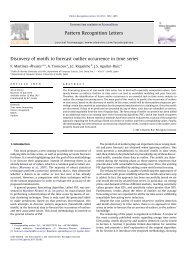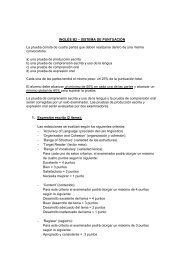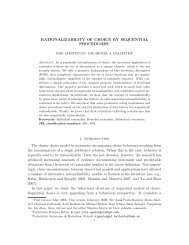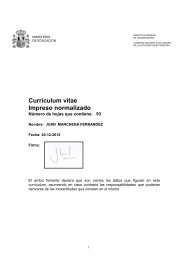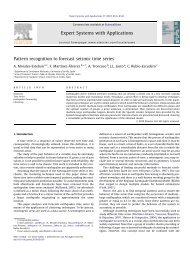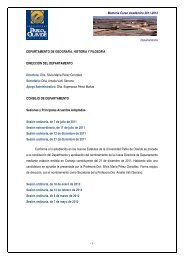Working papers series - Universidad Pablo de Olavide
Working papers series - Universidad Pablo de Olavide
Working papers series - Universidad Pablo de Olavide
You also want an ePaper? Increase the reach of your titles
YUMPU automatically turns print PDFs into web optimized ePapers that Google loves.
A brief <strong>de</strong>scription of the configuration of this particular system may help to<br />
approach these questions. Therefore, the first part of the present article will dwell upon<br />
the network organization and its incentives, as analysed in their three hierarchical<br />
levels: parent companies and their branches; correspon<strong>de</strong>nts and partners; and the<br />
clientele.<br />
Next, we will add an analysis of the effectiveness of the network, focusing on<br />
the way in which information was circulated and distributed, as well as <strong>de</strong>scribing the<br />
<strong>de</strong>velopment of the <strong>de</strong>cision-making process; finally, the strategies followed by this<br />
network so as to reduce costs and risks will prece<strong>de</strong> the conclusions of our work.<br />
II<br />
The Rothschild house was, and still is, a strictly family enterprise that, initially,<br />
boasted five different branches spread over Frankfurt, London, Paris, Vienna and<br />
Naples during the Napoleonic wars. The one in Frankfurt, where the family came from<br />
originally, was the meeting place for the first generation, but its importance remained<br />
largely symbolic; the short-lived headquarters in Naples were the last but one in<br />
importance, whereas in Vienna Salomon Rothschild managed to get hold of most of the<br />
public finances of the Austrian-Hungarian Empire, generating an important entity such<br />
as Creditanstalt. Nevertheless, the most outstanding ones were the main offices in<br />
London, where Nathan Mayer and his heirs created N.M. Rothschild & Sons, one of the<br />
most prestigious banking houses in the City, as well as the one in Paris, that James<br />
Rothschild turned into the most important private banking house in Europe until his<br />
<strong>de</strong>ath, that took place in 1868.<br />
This spreading of headquarters and corporate addresses did not mean a<br />
severance between the different members of the family, and, in fact, most of the success<br />
of the famous banking house during most part of the 19 th century was due, precisely, to<br />
their sense of coordination and solidarity in business; mutual commitments were<br />
institutionalised periodically through internal pacts that worked from 1814 until at least<br />
1905 19 .For our purposes, the London and Paris headquarters explicitly shared most of<br />
our businesses in Spain, to the point of sharing agents, financing and the accountancy of<br />
the operations.<br />
Figure One: The Madrid Agency in the Rothschild business in the 19 th century<br />
5<br />
http://www.upo.es/econ



